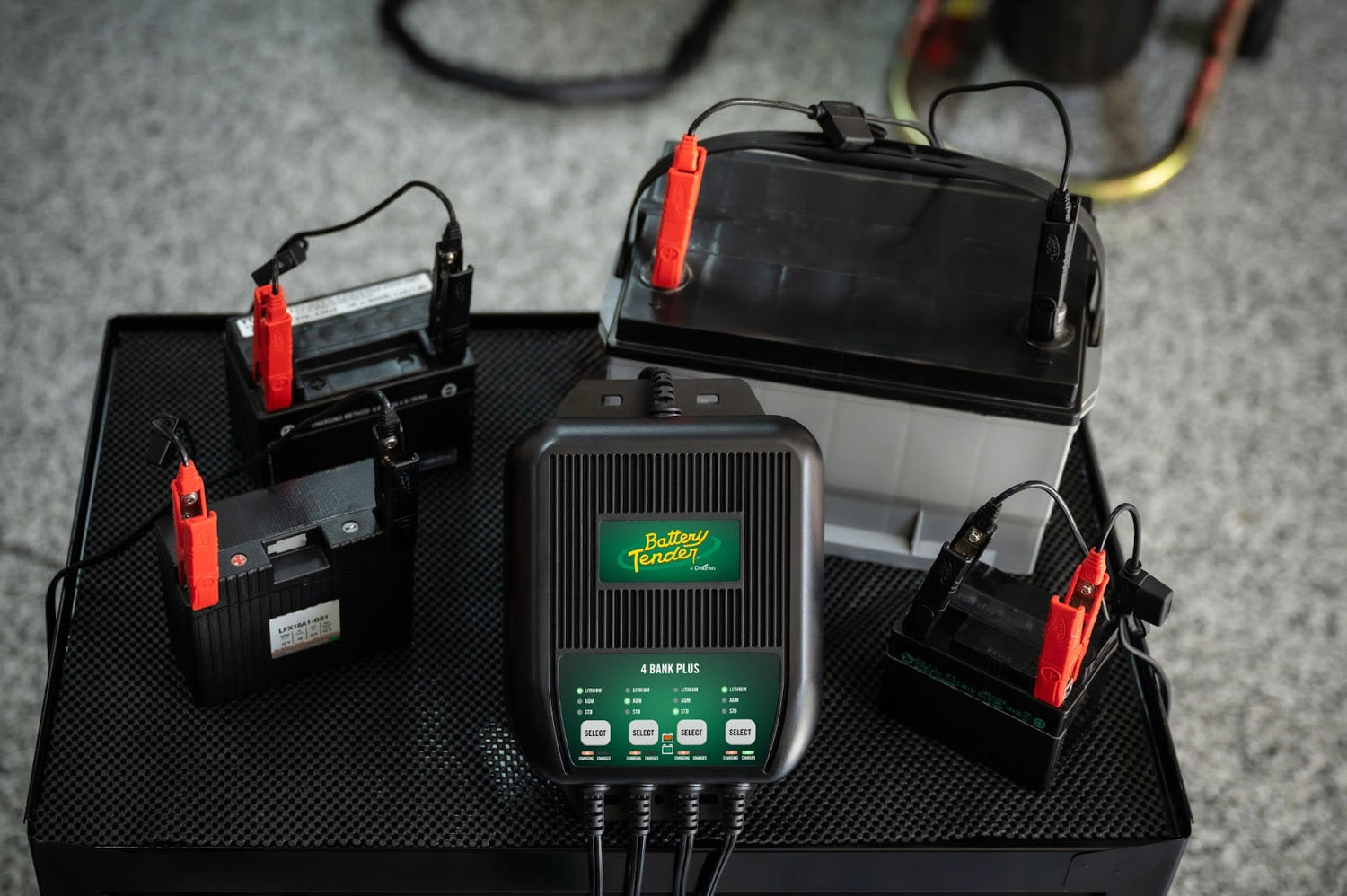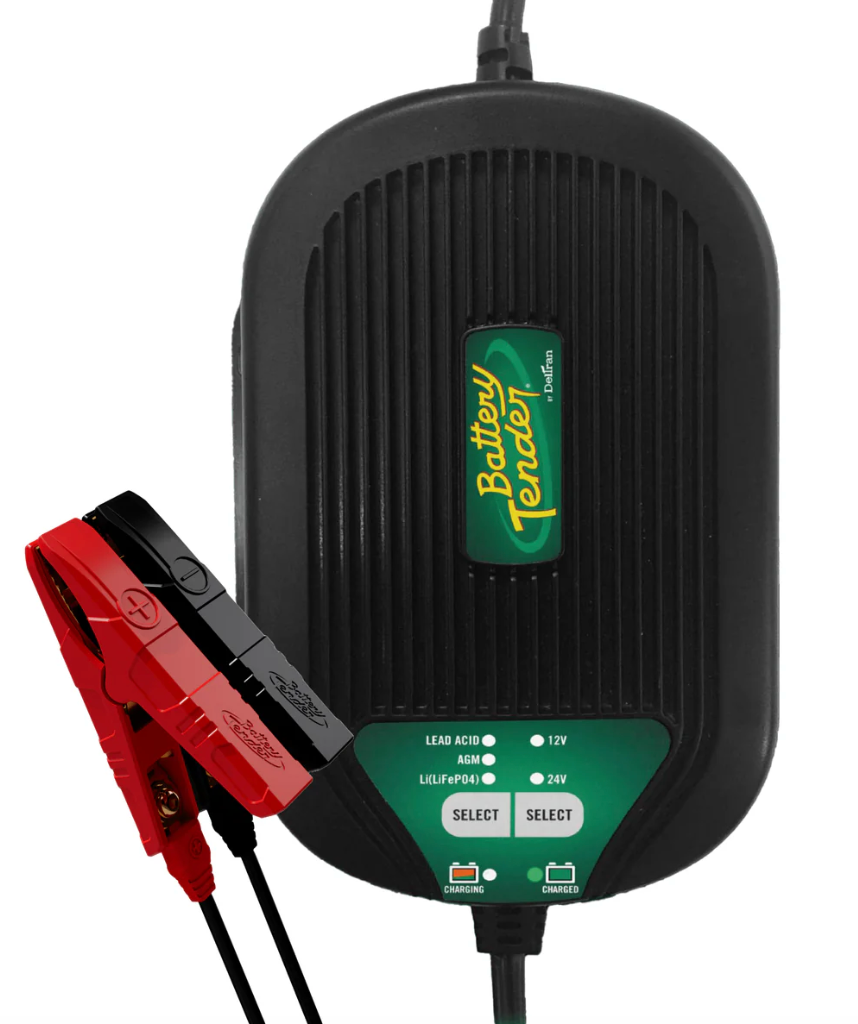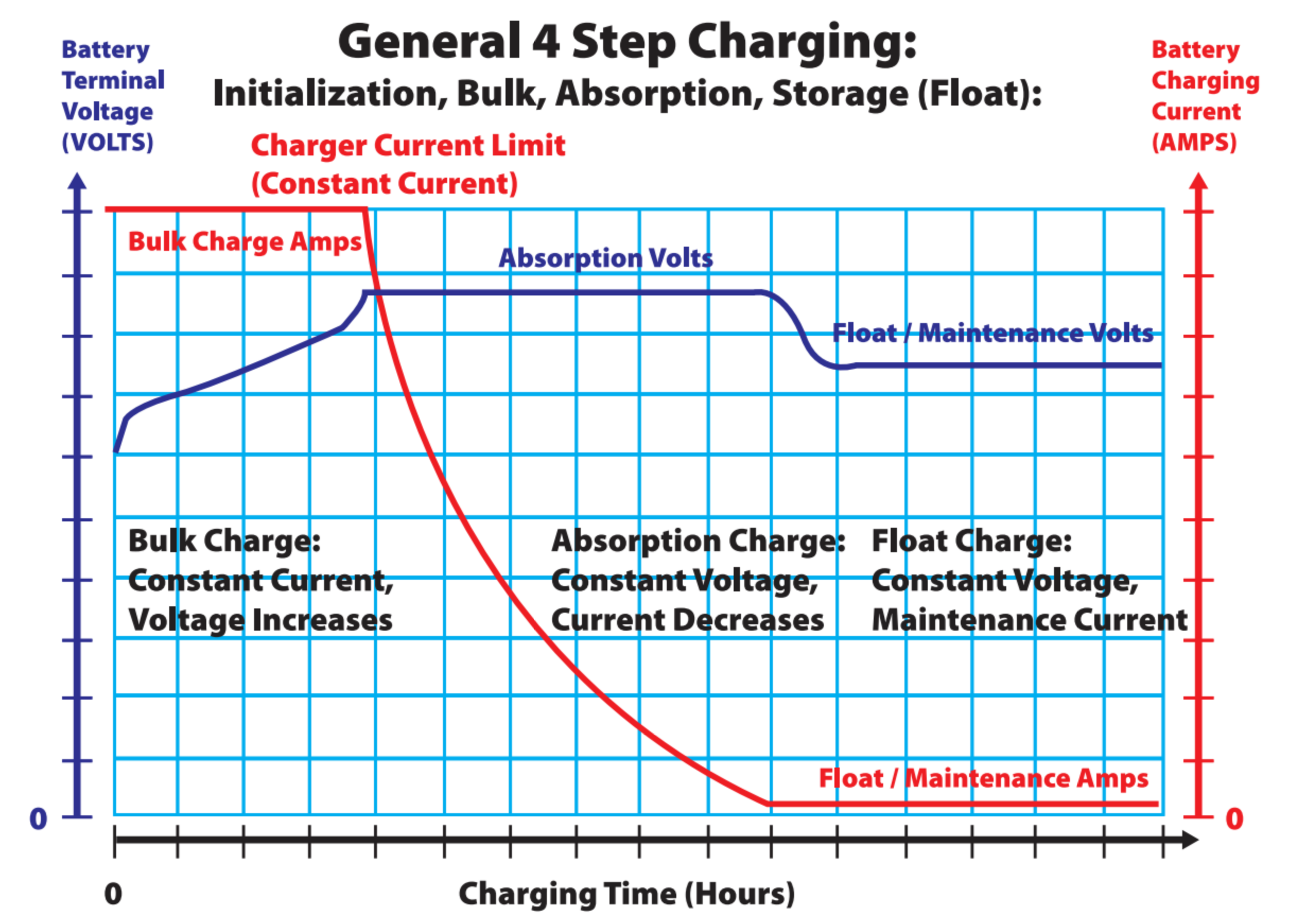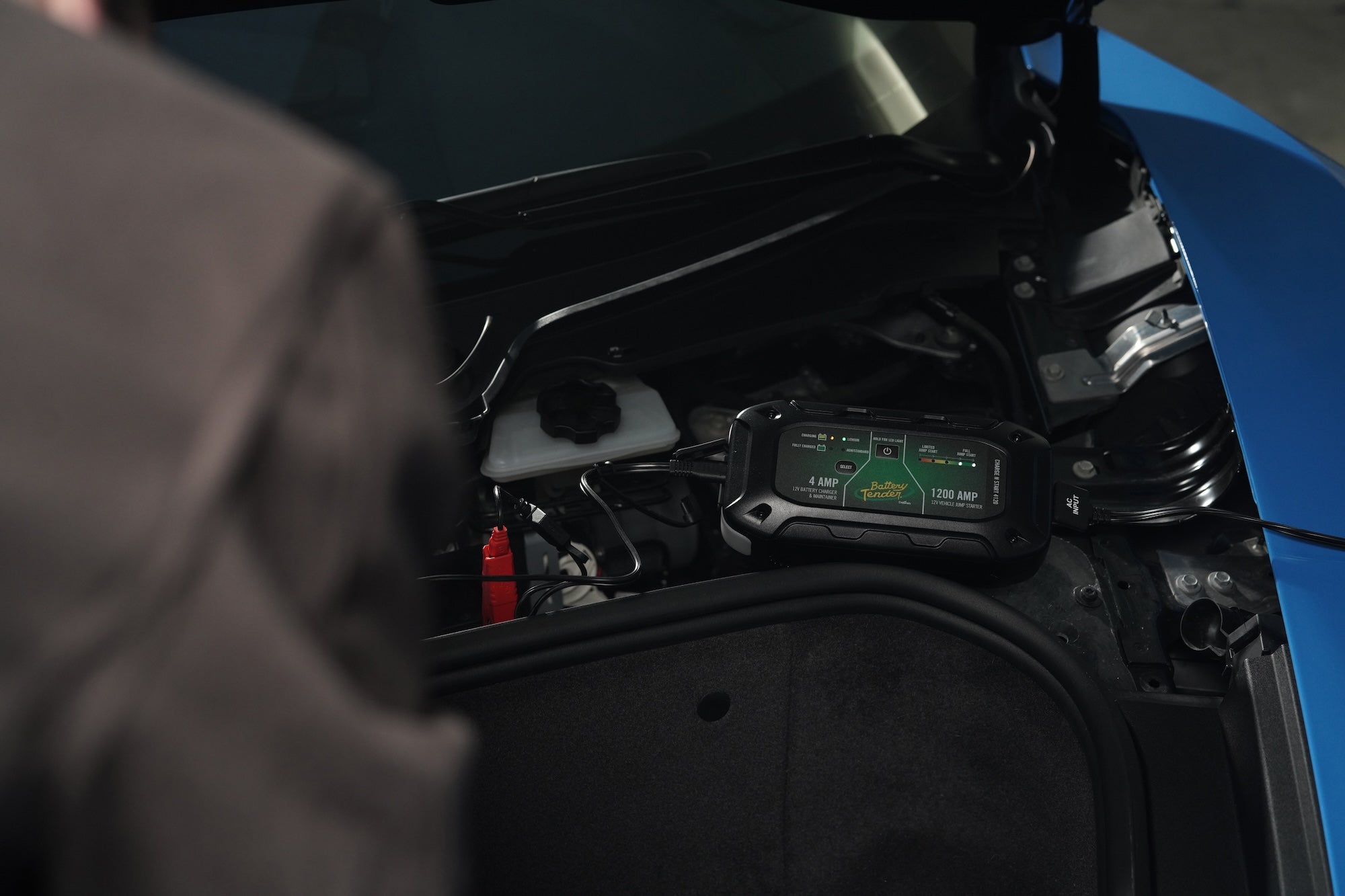Batteries are the silent workhorses of our vehicles, but even the best batteries can succumb to the ravages of time and lack of use, leading to frustrating breakdowns and costly replacements. Enter Battery Tender® chargers – renowned for their ability to maintain and extend battery life. However, with various models and maintenance routines, it's easy to feel a little lost.
Let's demystify battery charger usage and help you keep your batteries in peak condition.
Choosing the Right Battery Tender Charger for Your Battery
Battery Tender offers a comprehensive range of chargers designed for specific battery sizes and applications. Here's how to match the right charger to your needs:
For Small Batteries (6-20 Ah) - Motorcycles, ATVs, Jet Skis, Small Equipment:
- Battery Tender Junior (750mA): Perfect for maintenance charging and long-term storage of smaller 12V batteries. Ideal for motorcycles, scooters, and seasonal equipment that sit unused for months.
- Battery Tender Plus (1.25A): Steps up the charging power for slightly larger small-vehicle batteries or when you need faster charging than the Junior provides.
- WP800 (800mA Weather-Resistant): Specifically designed for harsh outdoor conditions with IP65 rating. Perfect for equipment that must remain outdoors year-round.
- Charge N Start 1100/1120: 2-in-1 units combining smart charging with jump starting capability. The 1100 and 1120 are perfect for motorcycles and ATVs, providing both maintenance charging and emergency starting power with 14ft total reach and compatibility with multiple battery chemistries.
For Medium Batteries (20-60 Ah) - Cars, Boats, RVs, Golf Carts:
- Battery Tender 3 AMP Charger: Excellent for standard car batteries and marine applications. The 6V/12V switchable feature makes it versatile for golf carts and classic cars with 6V systems.
- Battery Tender 4 AMP Charger: Ideal for medium-sized automotive and marine batteries when you need faster charging than the 3 AMP unit provides.
- Battery Tender 5 AMP Charger: Perfect for larger car batteries and medium-duty applications requiring quicker charge times while still being gentle enough for regular use.
- Charge N Start 4120: The heavy-duty option in the Charge N Start series, combining smart charging with powerful jump starting for cars, SUVs, and larger vehicles up to 6.0L gas and 3.0L diesel engines.
For Large Batteries (60-100+ Ah) - Trucks, Commercial Vehicles, Large Marine:
- Battery Tender 10 AMP Smart Charger: Excellent for large automotive batteries and commercial applications requiring faster charging without the full power of the 15 AMP unit.
- Battery Tender 15 AMP Smart Charger: The powerhouse for large batteries that need rapid charging. Features selectable power settings (2A for smaller batteries and slower charging, 8A for medium to large batteries with faster charge times, and 15A for large batteries and rapid charging for all sizes).
- PowerPlus Series - Multi-Voltage Solutions:
- PowerPlus 12V: Perfect for large 12V automotive, marine, and RV house batteries
- PowerPlus 24V: Designed for commercial trucks, heavy equipment, and larger marine vessels with 24V electrical systems
- PowerPlus 36V: Specifically engineered for golf cart battery banks and large marine trolling motor applications
- PowerPlus 48V: Industrial and commercial applications including forklifts, floor scrubbers, golf carts, and high-voltage battery systems
For Multiple Batteries - Garages, Dealerships, Fleet Management:
Charge multiple batteries simultaneously with independent operation and selectable chemistry modes
- 1.25 AMP Multi-Bank (2-bank, 4-bank): Maintenance charging for motorcycles, ATVs, and small equipment in home garages or dealerships.
- WaveCharge 3 AMP Multi-Bank (2-bank, 3-bank, 4-bank): Standard automotive and marine batteries for boat owners, RV centers, and fleet operations.
- WaveCharge Pro 10 AMP Multi-Bank (2-bank, 3-bank, 4-bank): Heavy-duty rapid charging for larger marine batteries, commercial operations, RV parks, and fleet maintenance.
Each bank operates independently with selectable chemistry modes, allowing you to charge different battery types, sizes, and chemistries simultaneously. This flexibility makes multi-bank chargers perfect for mixed fleets or facilities handling various vehicle types.
Electric Vehicle Charging Solutions:
- EV Charger 32 AMP: Professional dual-level charging solution for electric vehicles. Features NEMA 5-15 adapter for 120VAC compatibility, making it versatile for both home and commercial EV charging applications. Perfect for Tesla, Nissan Leaf, Chevy Bolt, and other popular EVs.
Solar Charging Solutions:
-
Solar Chargers (5W-17W): Eco-friendly maintenance charging perfect for remote locations, RVs, boats, or maintaining batteries in stored vehicles without access to AC power. Ideal for:
- Remote cabins and off-grid applications
- Seasonal vehicles stored outdoors
- Marine applications where shore power isn't available
- Emergency backup power maintenance
Key Sizing Guidelines:
- Maintenance charging: Choose 1-2% of battery capacity (e.g., 750mA charger for 40Ah battery, 1.25A charger for 60Ah battery)
- Regular charging: Choose 5-10% of battery capacity (e.g., 3A charger for 40-60Ah battery, 5A charger for 60-100Ah battery)
- Fast charging: Choose 15-25% of battery capacity (e.g., 10A charger for 60Ah battery, 15A charger for 80-100Ah battery)
Chemistry Compatibility Note: Most Battery Tender models feature selectable chemistry modes, automatically adjusting for lead-acid, AGM, gel, and LiFePO4 batteries. Always verify your specific model's compatibility, especially for lithium batteries.
How Often Should You Use Your Battery Tender Charger?
The beauty of a Battery Tender charger is its "set it and forget it" nature, especially for maintaining optimal condition during periods of non-use.
- For Stored Vehicles/Equipment (e.g., Motorcycles in Winter, RVs off-season, Classic Cars): This is where Battery Tender chargers truly shine. Their smart charging technology will bring the battery to a full charge and then switch to a float/maintenance mode, preventing overcharging and keeping the battery topped off. This is the best way to extend battery life during storage.
- For Infrequently Used Vehicles (e.g., Weekend Cars, Occasional Boat Use): If you only use a vehicle once every few weeks, it's a good idea to connect the charger between uses. Even short periods of disuse can lead to a slight discharge, and consistent topping off will keep the battery healthy.
- For Daily Drivers: While not strictly necessary for a vehicle driven regularly, a battery charger can still be beneficial for vehicles with high parasitic drains (e.g., modern cars with lots of electronics) or those that only take short trips. Connecting it overnight once a week or every couple of weeks can help ensure the battery remains fully charged and happy.
The general rule of thumb is: if it's going to sit for more than a week or two, connect it to a charger.
When is a Battery Ready for Replacement, Despite Regular Charging?
Even with diligent use of a battery charger, batteries have a finite lifespan. Several indicators can signal that your battery is nearing the end of its road, even if it's being regularly charged:
- Slow Cranking: One of the most common signs. If your engine cranks slowly, especially on colder mornings, even after a full charge, it's a strong indicator of a weakening battery.
- Dimming Lights/Flickering Electronics: When the engine isn't running, if your headlights dim noticeably or interior electronics flicker, it suggests the battery isn't holding a sufficient charge.
- "No Start" After Short Periods of Sitting: If your vehicle won't start after sitting for only a day or two, even with a charger connected intermittently, the battery's ability to hold a charge is severely diminished.
- Corrosion on Terminals: While some corrosion is normal, excessive, persistent corrosion around the battery terminals can indicate internal battery problems or overcharging (though a battery charger aims to prevent this).
- Bulging or Cracked Battery Case: This is a clear sign of internal damage and potentially dangerous. Replace the battery immediately if you notice any physical deformities.
- Constant Need for Boosting: If you find yourself needing to jump-start your vehicle frequently, even after charging, the battery has lost its ability to hold a charge.
- Age: Batteries typically last 3-5 years, though this can vary greatly depending on climate, usage, and maintenance. If your battery is approaching or exceeding this age range, it's wise to start monitoring it more closely.
- Battery Tester Readings: A good quality battery tester (often available at auto parts stores or through mechanics) can provide a more definitive diagnosis. It can measure cold cranking amps (CCA) and voltage under load, giving you a clear picture of the battery's health.
By understanding the specific models of Battery Tender chargers, implementing a consistent charging routine, and recognizing the warning signs of a failing battery, you can significantly extend the life of your batteries and avoid being left stranded. Happy charging!




